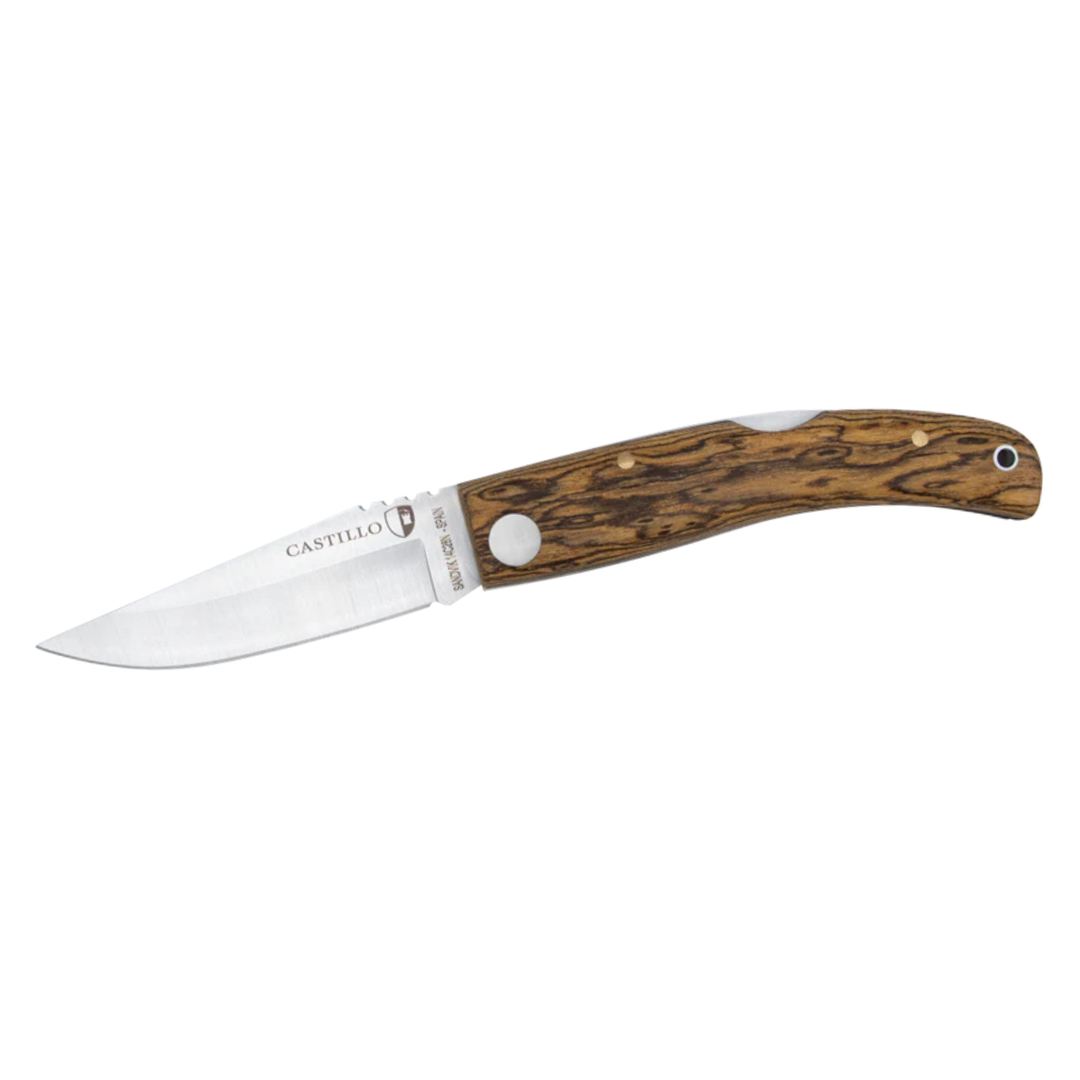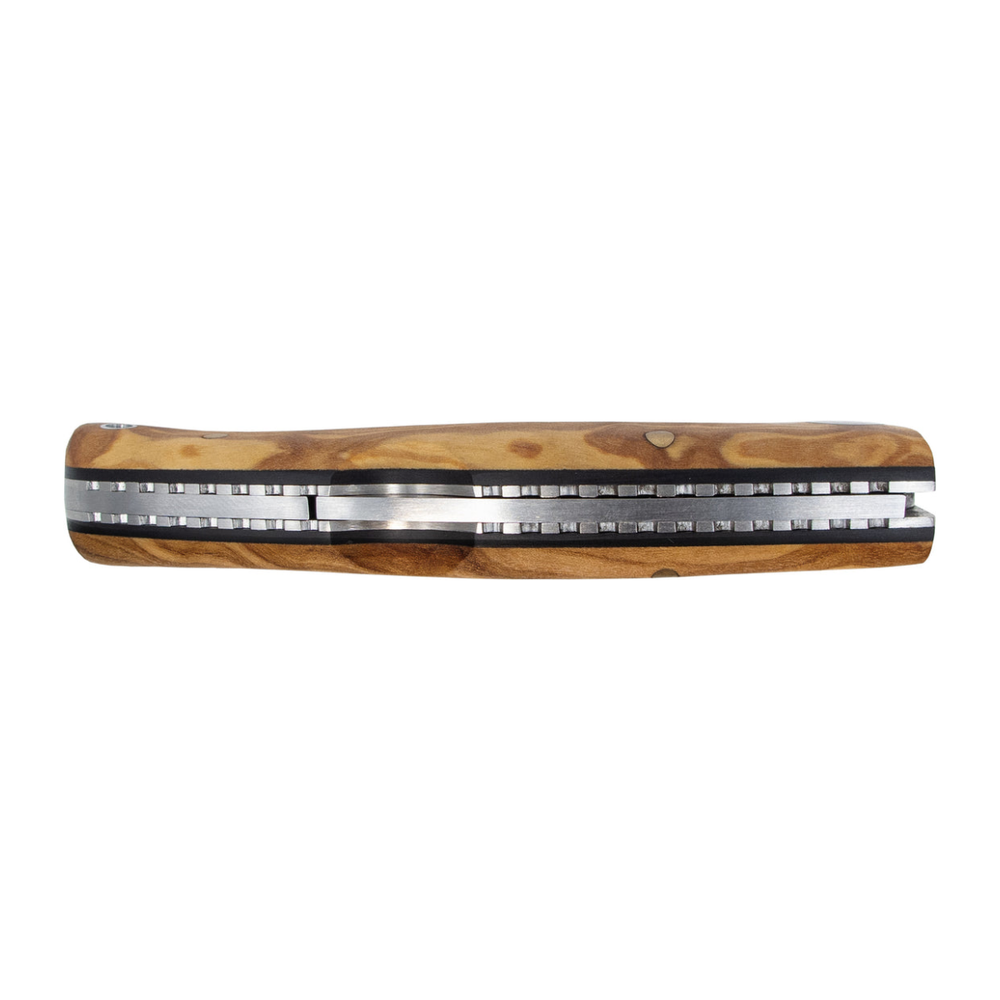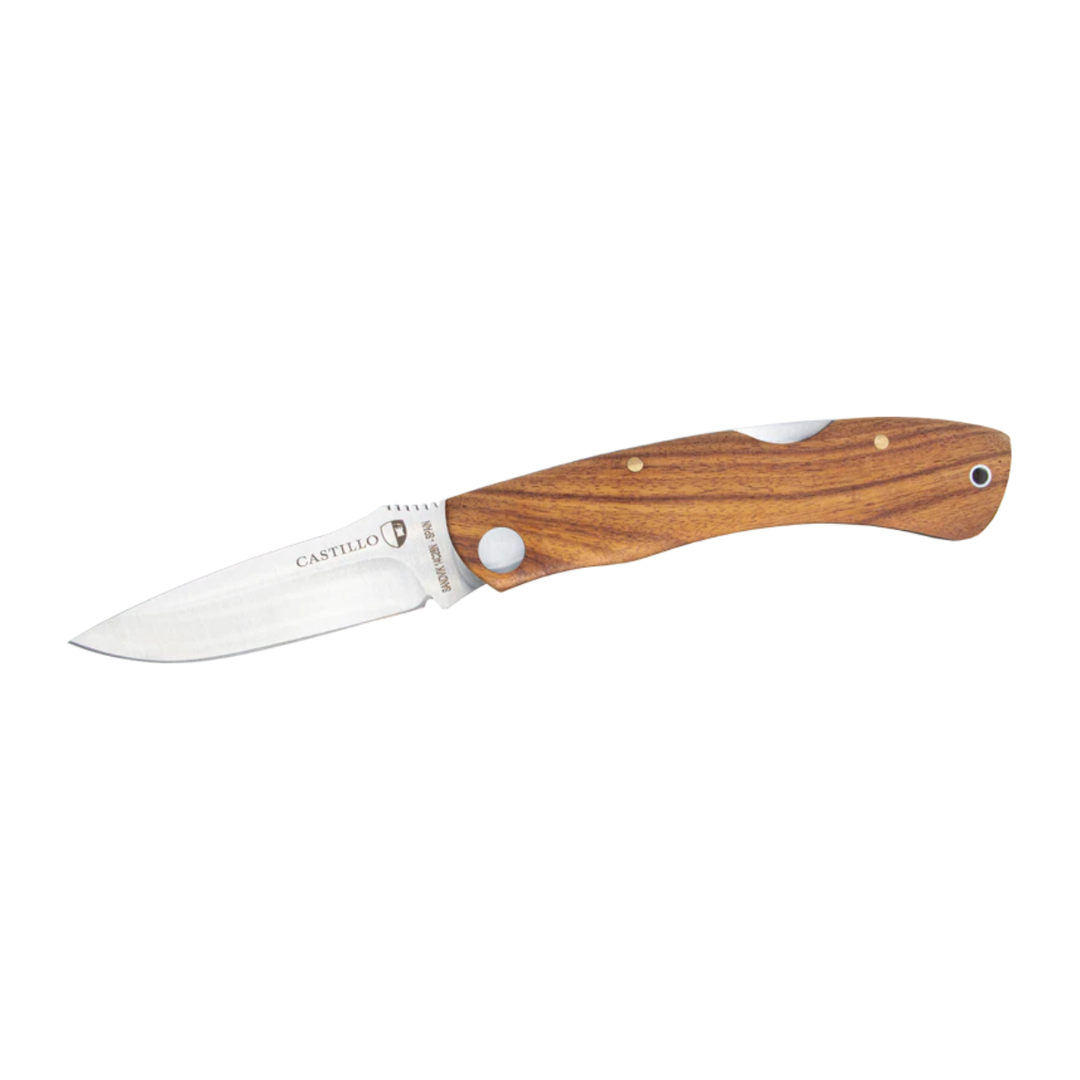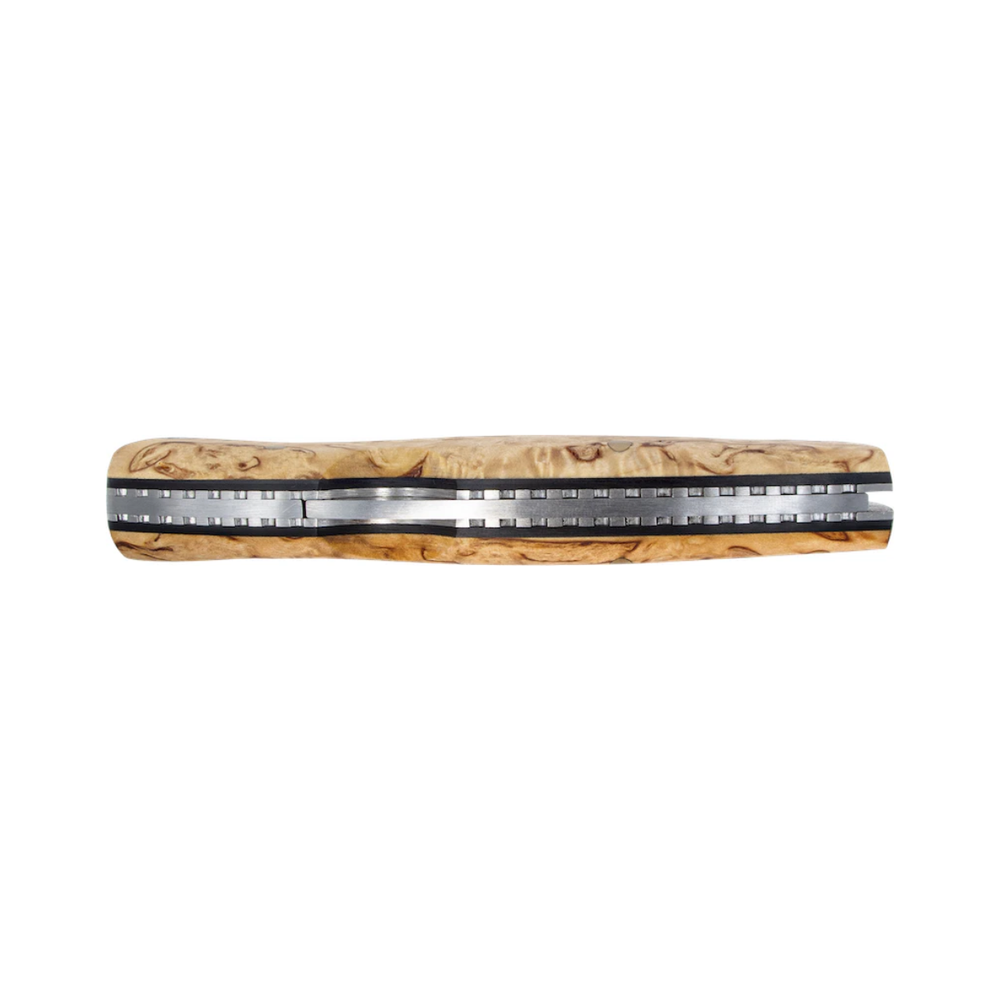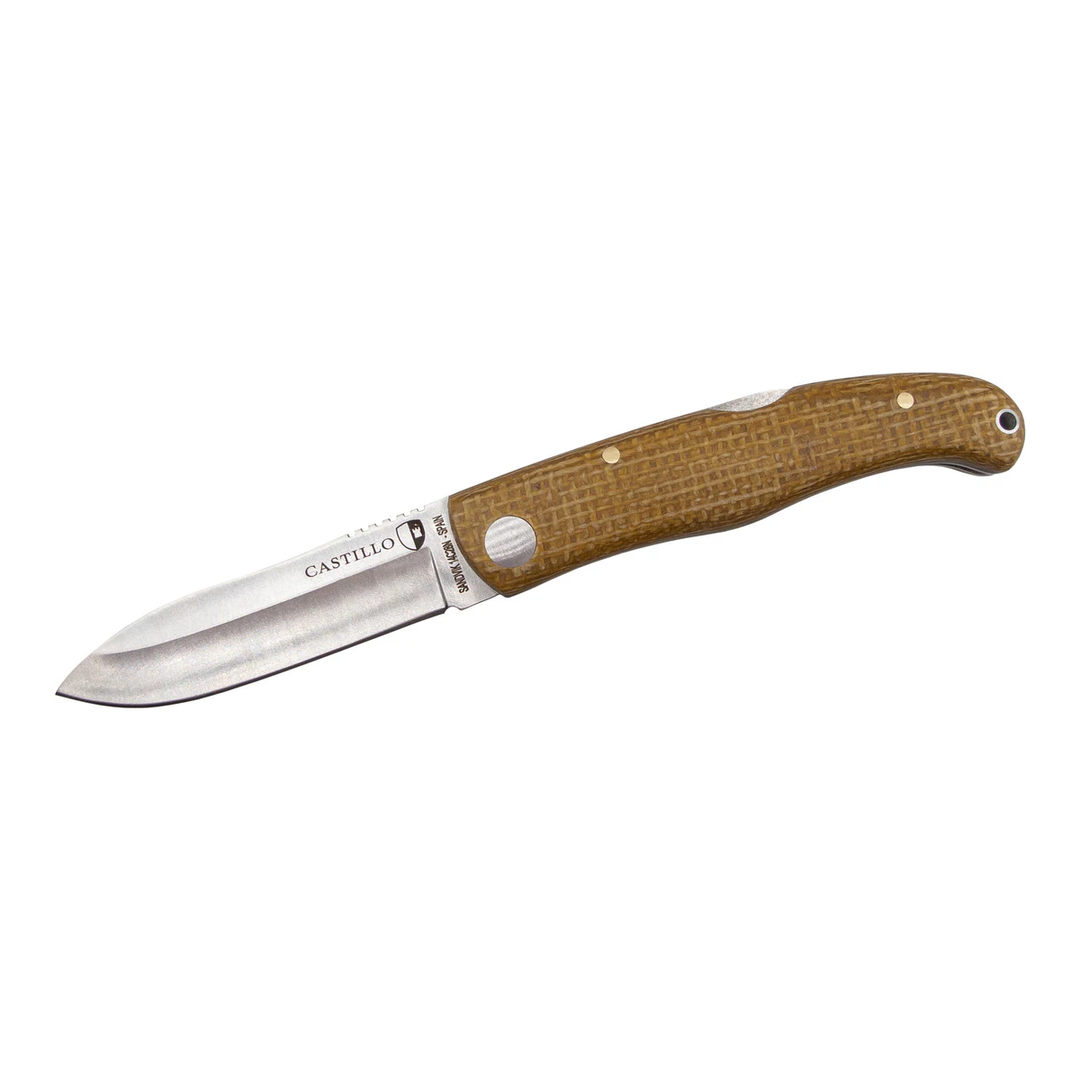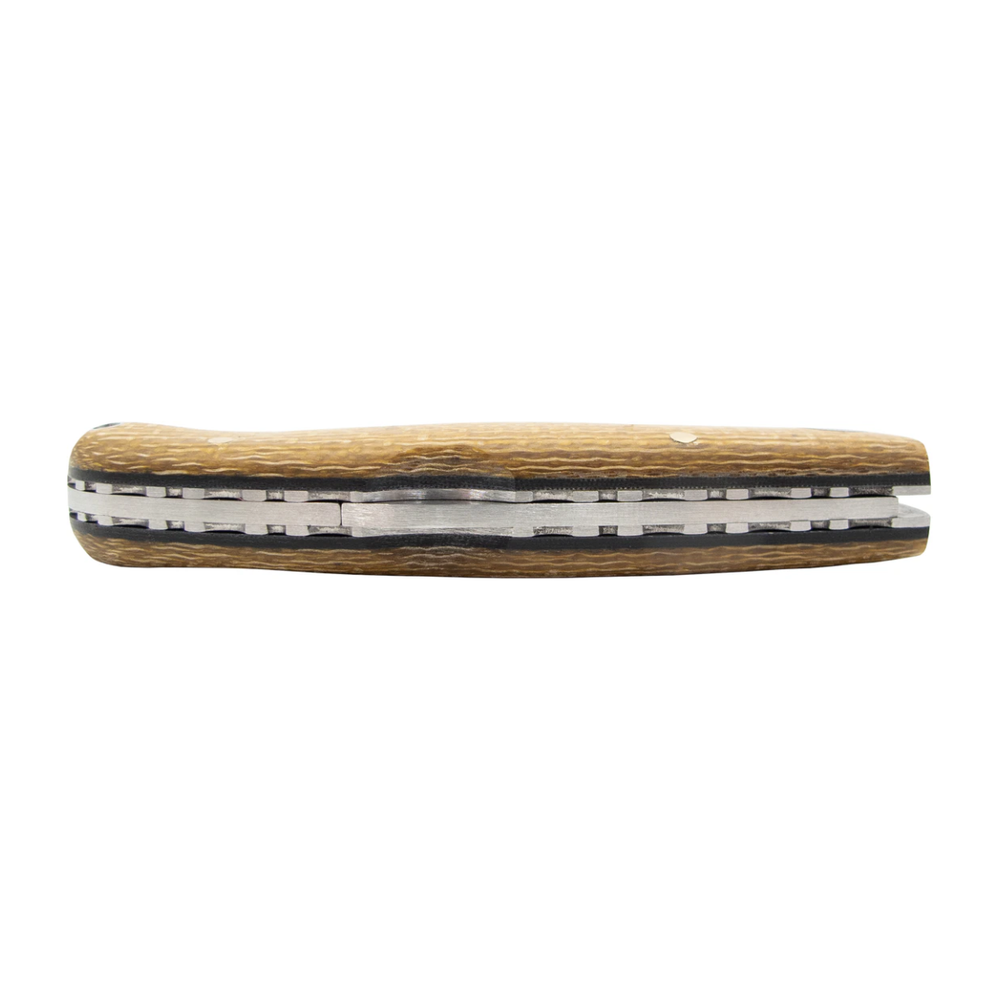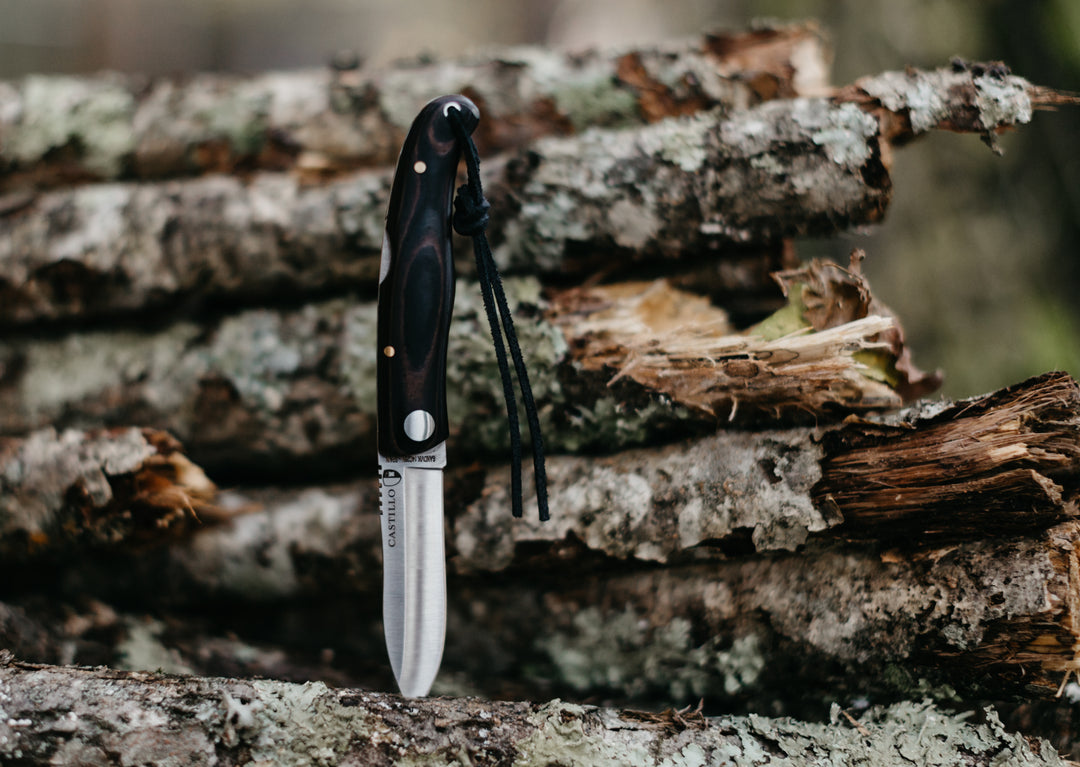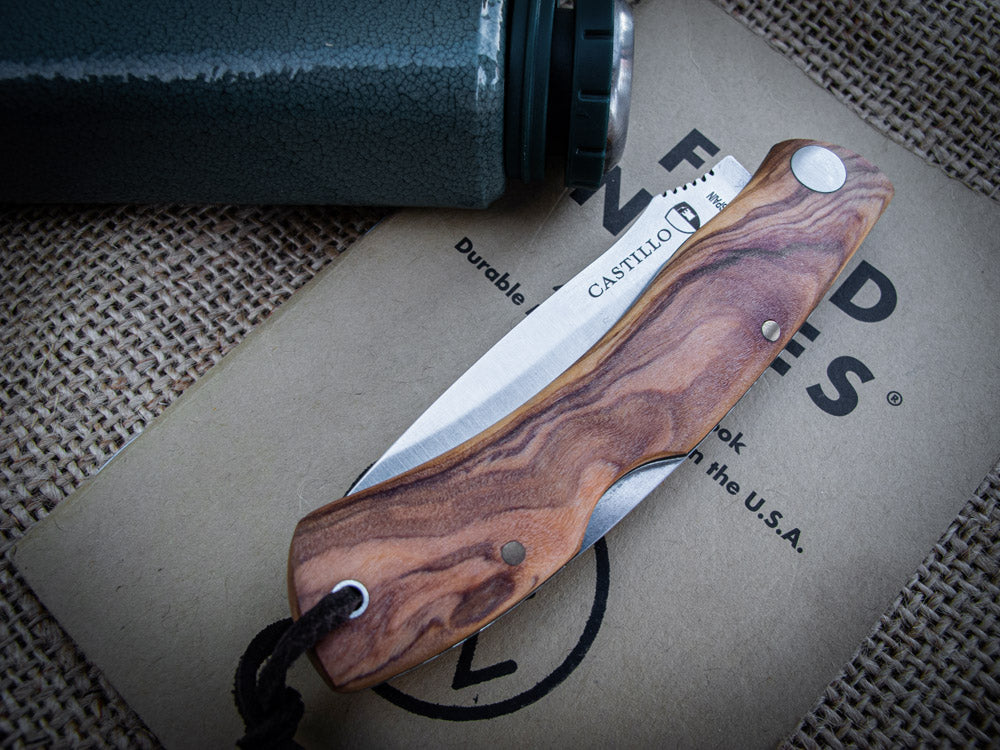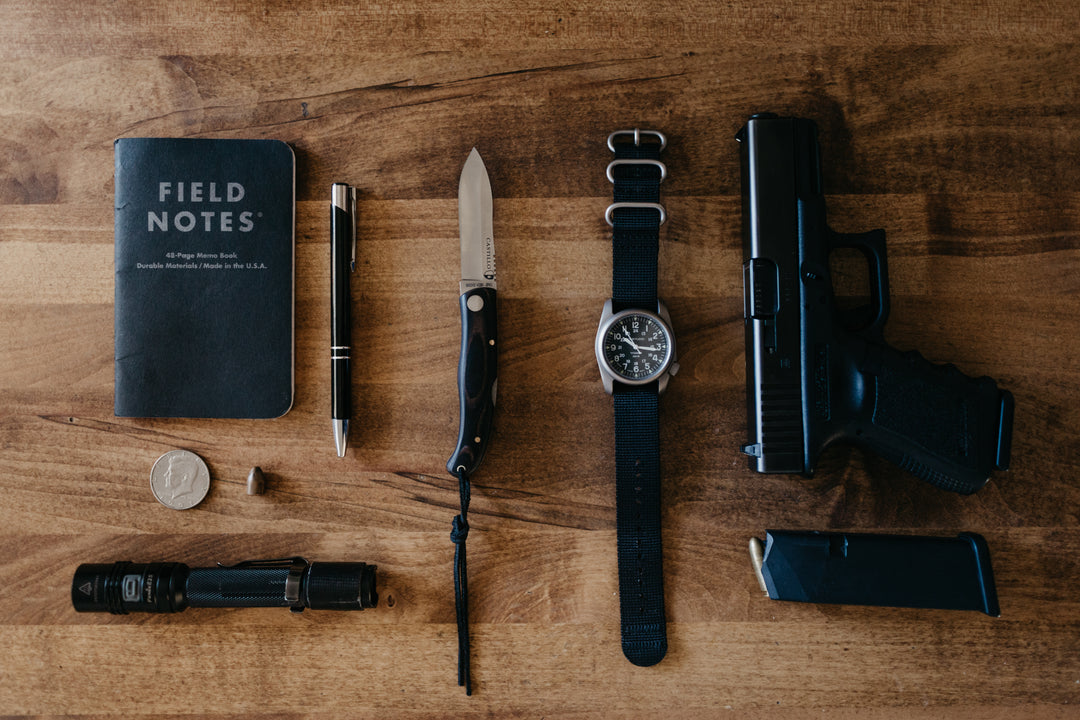The Ultimate Glossary of Knife Terminology
Your guide to understanding the language of knives.
Understanding knife terminology not only enhances your appreciation of the craftsmanship but also ensures you select the right tool for your needs. Whether you’re slicing, chopping, or exploring the outdoors, the right knife—and the knowledge to use it—is indispensable.
Understanding knife terminology is key to appreciating their craftsmanship and functionality, regardless if you’re a seasoned collector, an outdoor enthusiast, or simply just looking for the perfect everyday carry. This comprehensive glossary is designed to demystify the language of knives, guiding you through the terms and concepts that define this fascinating world.
A
- Apex: The very edge of a blade where both sides converge, enabling the knife to cut precisely.
- Alloy: A blend of metals combined to enhance properties like strength, sharpness, and resistance to wear.
B
- Back (Spine): The unsharpened, thicker edge of the blade, provides structural integrity.
- Bail: A semicircular metal loop attached to a knife for easy attachment to a clip, strap, or lanyard.
- Bevel: The sloping surface that runs along the edge of the blade, shaping its cutting angle.
- Bolster: A reinforced section of metal between the blade and handle, adding strength and sometimes decorative appeal.
- Belly: The gently curved portion of the blade edge, ideal for slicing.
- Blade: The sharpened metal part of a knife used for cutting, carving, or piercing.
- Blade Lock: A locking mechanism in folding knives that secures the blade in an open position during use.
C
- Carbon Steel: A material often used in knife blades, prized for its ability to hold a sharp edge but requiring regular maintenance to prevent rust.
- Choil: An unsharpened segment at the base of the blade, providing a grip point for greater control during intricate tasks.
- Clip Point: A blade design where the tip has a concave or clipped section, providing excellent control for detailed work.
- Corte: A term for the cut or slicing action performed by the blade.
D
- Damascus Steel: A unique steel created by repeatedly folding and forging two different metals, resulting in a striking layered appearance and enhanced durability.
- Drop Point: A blade design with a gradual convex curve at the tip, suitable for versatile tasks.
E
- Edge: The sharpened cutting side of the blade, which performs the slicing and chopping.
- EDC (Everyday Carry): Knives designed for portability and convenience, perfect for daily tasks.
- Epoxy: A resin-based adhesive used to secure knife components, often chosen for its strength and durability.
F
- Forge: The process of shaping metal into a blade through heat and hammering, showcasing traditional craftsmanship.
- Full Tang: A knife design where the blade extends fully through the handle, ensuring greater strength and balance.
G
- Grind: The shape of the blade's cross-section, which impacts sharpness and performance (e.g., hollow grind, flat grind).
- Guard (Hilt): A feature separating the blade from the handle to protect the user’s hand during operation.
I
- Inlays: Decorative materials embedded into a knife handle for enhanced aesthetics and grip.
L
- Lanyard Hole: A small hole in the handle, allowing a cord or lanyard to be attached for added security.
- Liner: An interior layer, often of soft metal, that protects folding blades and reinforces handle construction.
M
- Micarta: A durable material used in knife handles, made by bonding layers of fabric, paper, or wood with resin under pressure.
P
- Pins: Small metal pieces, typically brass or copper, used to fasten the handle scales to the tang or secure other components.
- Pommel: The rounded or extended section at the end of a knife handle, providing balance or serving as a tool for striking.
R
- Retention: A measure of how well a blade maintains its sharp edge over time.
- Ricasso: The unsharpened section of the blade just before the hilt, often used for additional grip or engraving.
- Rockwell Hardness Test: A method for measuring the hardness of a blade by determining how deeply a diamond point penetrates the steel under pressure.
S
- Scales: The pieces of material (e.g., wood, horn, or synthetic) attached to the tang to form the handle of a knife.
- Scrimshaw: A decorative technique involving etching designs onto bone or ivory knife handles, then filling the engravings with ink for contrast.
- Serration: A series of saw-like teeth along the blade edge, perfect for cutting tough materials.
- Sheath: A protective covering, typically made from leather, nylon, or other materials, designed to safely house a knife when not in use. Sheaths protect both the blade and the user, often featuring loops or clips for convenient carrying.
- Shield: A metal emblem or insert embedded in the knife handle for decoration or branding.
- Spine: The unsharpened back edge of the blade, offering strength and support during use.
- Stainless Steel: A type of steel that resists rust and corrosion due to its higher chromium content, though it may have slightly reduced edge retention compared to carbon steel.
T
- Tang: The portion of the blade that extends into the handle, crucial for strength and balance.
- Tempering: A heat-treating process that improves the toughness of a blade by reheating and cooling it in a controlled manner.
- Trailing Point: A blade design where the tip curves upward, making it ideal for slicing or skinning tasks.
W
- Wharncliffe: A blade shape with a straight edge and a spine that tapers toward the tip, designed for precision and control.
- Whetstone: A sharpening stone used to restore and maintain the blade’s edge.
We hope this glossary of knife terms has deepened your understanding of the intricate craft behind knives and the terminology that shapes their design and use. At Castillo® Knives, we blend tradition with innovation to create exceptional tools that stand the test of time.
Whether you’re exploring our handcrafted Spanish knives or sharpening your knowledge, there’s always more to discover in the world of blades. If you have questions or want to learn more, please reach out or browse our knife collection below.




